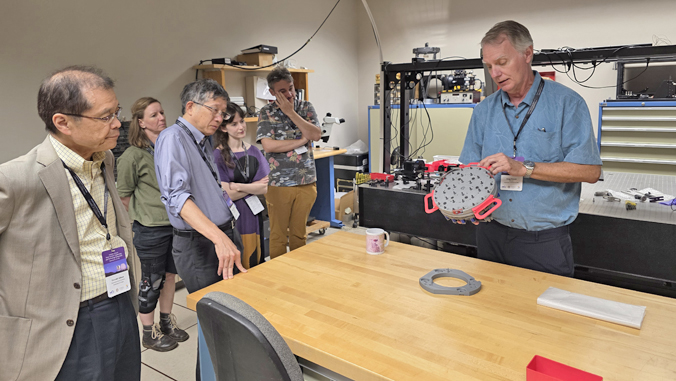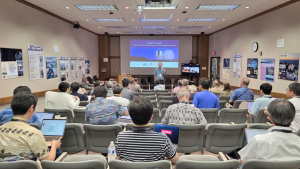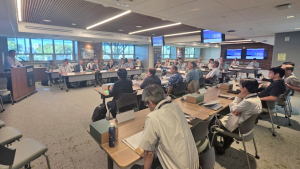
The University of Hawaiʻi showcased its growing role in global astronomy and space research by hosting an international symposium, September 22–24, bringing together leading experts from Japan and Hawaiʻi to explore the future of ground- and space-based science and technology.
The three-day event at UH Mānoa, Institute for Astronomy (IfA) in Hilo and Subaru and Gemini observatories, was part of UH’s Space Science and Engineering Initiative (SSEI), which is positioning the university as a hub for cutting-edge space research, engineering and workforce training. More than 45 participants—22 from Japan and 25 from UH—took part in sessions on cosmology, exoplanets, planetary science, cosmochemistry and astrophysics, along with specialized discussions on telescope technologies, optics, detectors and spectrometers.

“This symposium highlights Hawaiʻi’s unique role in global space research and underscores our commitment to training the next generation of scientists and engineers right here at home,” UH President Wendy Hensel said. “We are proud that UH continues to expand its expertise and work in this field.”
“One of our goals is to create an academic pathway for students in space sciences and engineering that will develop a well-qualified, locally based workforce pipeline to service the needs of our world-class observatories here in the islands,” UH Mānoa Interim Provost Vassilis Syrmos said.

Participants toured UH’s advanced laboratories, including the Hawaiʻi Space Flight Laboratory Clean Room, the Adaptive Secondary Mirror Lab and the Advanced Detector Development and Engineering Research Laboratory. The final day featured tours of IfA Hilo’s Photonics Lab, Adaptive Secondary Mirror Lab, Advanced Detector Development and Engineering Research Lab, and visits to the Subaru and Gemini observatories on Maunakea, underscoring Hawaiʻi’s unique role as home to some of the world’s most powerful astronomical facilities.
The symposium was built on a series of high-level meetings among UH, University of Tokyo (UTokyo) and National Astronomical Observatory of Japan (NAOJ), which operates the Subaru Telescope on Maunakea. The expanded collaboration is expected to include joint research projects, testing of new instruments, faculty exchanges and student training opportunities.
“It became clear to all of us at this symposium that UH, NAOJ and UTokyo each have their own unique institutional strengths in research on space science, engineering and technology,” said Hiroaki Aihara, executive director and vice president of the University of Tokyo. “A UH–NAOJ–UTokyo partnership can only enhance our research capacity.”
More about SSEI
UH launched SSEI to harness Hawaiʻi’s natural advantages in astronomy while building local expertise in engineering and manufacturing for space-based missions. The initiative is backed by state support to create a new space engineering and instrument development center in Hilo, which is expected to expand Hawaiʻi’s technology sector, bring in millions of dollars in research funding and create high-paying jobs for residents.